In the ever‑evolving life sciences industry, digitization is no longer optional — it’s a strategic imperative that drives efficiency, innovation, and regulatory confidence. A well-executed digitization strategy delivers:
- Accelerated Workflows: Fewer manual tasks and faster turnaround times boost productivity and responsiveness.
- Data‑Driven Insights: Real‑time analytics allow teams to optimize processes and spot trends early.
- Enhanced Security & Integrity: Robust data protection and audit‑ready records reduce compliance risks.
Transitioning from paper‑based processes to streamlined digital workflows — leveraging cloud computing and data analytics — empowers organizations to make informed, data‑driven decisions. This foundational step also ensures data integrity, security, and accessibility, setting the stage for compliance success.
Still, digitization in the life sciences is not just about technology. It’s a multi-layered transformation that requires strategic planning, cultural adaptation, and regulatory foresight.
That raises a critical question: Is digitization a catalyst for stronger compliance—or could it become an obstacle? In this post, we explore how a well-grounded digitization strategy can serve as both a driver of efficiency and a cornerstone of regulatory compliance.
What is digitization and how is it applied in life sciences?
Digitization is the process by which physical or analogue information and processes are transformed into digital formats.
This can include the conversion of paper documents to electronic files, the automation of manual tasks through software, or the creation of digital products and services, which makes it a great ally to improve efficiency, reduce costs and open new opportunities in the modern world.
It is a multifaceted process that encompasses any stage of the product life cycle:
|
Research & Development |
Production |
Distribution |
Patient Care |
|
|
|
|
Fig 1. Some applications of digitization in life sciences
Digitalization not only improves the efficiency and quality of processes but also opens up new opportunities for innovations in healthcare treatment and management, providing much more performance and robustness in operations, quality documentation, nonconformity control, product development, equipment maintenance and many more.
The digitalization process in life sciences stems from what is known as Industry 4.0, a term that was first proposed by the German federal government in a national strategy to promote the computerization of manufacturing. It represents the fourth industrial revolution on the way to an internet of things, data, and services 1.
When digitalization and the concept of Industry 4.0 touched the life sciences, the International Society for Pharmaceutical Engineering (ISPE) developed a series of business cases to show the potential benefit of adopting Industry 4.0 automation and digital transformation technologies in the pharmaceutical industry and to warn of the challenges that healthcare regulations often pose when introducing these new technologies.
This compilation gave rise to an operational model that, although designed for the pharmaceutical industry, is also applicable to other life sciences as they share very similar regulatory requirements.
How digitization strengthens regulatory compliance
A holistic digitization strategy does more than optimize operations — it becomes the backbone of your compliance framework. Rather than piecemeal tools, you’ll maximize value by deploying interconnected systems that:
- Centralize Data
A single digital platform gathers R&D, manufacturing, quality, and distribution records. This reduces siloed information and makes audit-ready reporting straightforward. - Automate Compliance Checks
Built-in validation rules flag deviations in real time. Teams spend less time on manual reviews and more on high-value tasks. - Ensure Traceability
End-to-end digital logs provide immutable audit trails—from raw materials and batch records to shipment details.
With these capabilities in place, your organization can generate complete, consistent records on demand and respond to regulatory inquiries faster.
Despite these advantages, the path to digital transformation presents unique challenges:
- Securing buy-in: Change can be met with resistance. Overcome it with leadership endorsement, clear benefits, and targeted training.
- System integration: Legacy platforms may not mesh easily with new solutions. Plan phased rollouts and invest in interface layers or middleware.
- Skill gaps: Your teams need digital fluency. Build it through hands-on workshops and ongoing support.
Yet, with a well-structured strategy and a commitment to continuous improvement, these challenges can be transformed into stepping stones, helping organizations build a resilient, future-ready compliance infrastructure.
Critical success factors for your digitization journey
Digital projects in life sciences demand more than just new software – they require a holistic approach that aligns with your regulatory, operational, and cultural needs. Here are five key areas to guide your path, with concrete steps to keep you on track:
1. Regulatory alignment
Begin by mapping every applicable regulation to your digital design.
- Inventory your requirements: List standards such as FDA 21 CFR Part 11, EU Annex 11, and ICH E6, then cross-reference them against each planned system feature.
- Embed validation early: Draft your software validation protocols before you write a line of code. This ensures test scripts, traceability matrices, and acceptance criteria are built into deployment plans rather than bolted on afterwards.
2. Robust data governance
Protecting and maintaining your data is non-negotiable in a regulated sector.
- Define clear ownership and access: Assign data stewards for each system module, and set role-based permissions so users see only what they need.
- Implement strong safeguards: Use end-to-end encryption for data in transit and at rest, and schedule automated backups (with off-site copies) to ensure you can recover quickly from any incident.
3. Risk-based implementation
Not all processes carry the same level of risk—focus resources where they matter most.
- Prioritize high-impact areas: Begin with workflows that directly affect patient safety or product quality, such as batch record management or patient data handling.
- Validate smartly: Use worst-case scenario testing and process‐grouping techniques to cover multiple use cases in a single protocol, reducing validation time without sacrificing compliance.
4. Cross-functional collaboration
Successful digitization is never an IT-only project—it’s an organizational effort.
- Form your core team: Bring together representatives from Quality, IT, Operations, and Regulatory Affairs at project kick-off to align on objectives and timelines.
- Steer with a committee: Establish a governance body that meets regularly to review progress, resolve roadblocks, and make decisions on scope changes or resource allocations.
5. Continuous improvement
A digital system is never “finished.” You must monitor, learn, and adapt.
- Track meaningful metrics: Set up KPIs such as deviation counts, average time to product release, and frequency of audit observations. Review these monthly and adjust processes as needed.
- Use real‑time dashboards: Implement a live compliance dashboard so stakeholders can see system health at a glance, flagging anomalies immediately and driving faster corrective actions.
By walking through these five areas — aligning with regulations, governing data, prioritizing risks, collaborating across functions, and embedding continuous improvement—you’ll transform a technology rollout into a sustainable, compliant digital ecosystem.
Future trends: next‑gen digital compliance for life sciences
The pace of digitization in life sciences shows no sign of slowing. To stay ahead, it’s essential to understand emerging technologies and regulatory shifts that will reshape compliance.
Here are four trends to guide your roadmap—each with concrete steps to pilot or scale in your organization:
1. AI‑Powered Risk Management
Leveraging artificial intelligence can move your compliance program from reactive to proactive.
- Deploy predictive analytics: Train machine‑learning models on historical deviation and audit data to identify patterns—then surface early warning signals when similar conditions arise. For example, flag unusually high batch rejection rates before they impact supply.
- Automate regulatory monitoring: Use Natural Language Processing (NLP) tools to continuously scan FDA, EMA, and other updates; classify new requirements; and generate summary reports with recommended process changes. This ensures your SOPs evolve in lockstep with guidance.
2. Decentralized Clinical Trials (DCTs)
Digital health tools are democratizing research and tightening compliance at the same time.
- Integrate wearable sensors: Roll out pilot studies using FDA‑cleared wearables that capture vital signs continuously. Build automated checks to verify data completeness and protocol adherence, reducing manual source data verification.
- Streamline e‑consent and eCRFs: Implement secure mobile apps for electronic consent and case report forms (eCRFs). Configure audit trails so every change or signature is timestamped and linked to user credentials, simplifying inspections.
3. Blockchain‑Secured Supply Chains
Blockchain’s immutable nature is ideal for critical supply‑chain traceability and anti‑counterfeiting.
- Record batch events on a ledger: Partner with a blockchain provider to log manufacturing steps—raw‑material receipts, in‑process checks, packaging. Each entry becomes a verifiable, tamper‑proof record accessible to authorized regulators and distributors.
- Automate recalls with smart contracts: Develop smart contracts that trigger predefined workflows when a quality alert arises—for instance, instantly notifying downstream partners to quarantine suspect lots and generating recall documentation automatically.
4. Regulator‑Industry Collaboration
Regulators are increasingly offering digital-first channels and evolving guidance to match industry innovation.
- Adopt digital submission portals: Get ahead by using FDA’s Electronic Submissions Gateway (ESG) or EMA’s eCTD platform for marketing applications. Early adopters report reduced review cycles and clearer audit trails for submitted data.
- Engage in pilot programs: Participate in FDA or IMDRF pilots for AI‑driven devices, blockchain applications, or real‑time data reporting. Insights from these collaborations can shape your internal policies and give you a voice in emerging regulatory frameworks.
By exploring these next‑generation trends — AI risk analytics, decentralized trials, blockchain traceability, and closer regulator partnerships — you’ll not only bolster compliance but also unlock new efficiencies and innovation pathways.
If you’re ready to evaluate which of these technologies fits your strategic priorities, QbD’s digital experts can help you develop a phased roadmap, run proof‑of‑concepts, and scale solutions across your organization.
Conclusion: a culture of compliance and innovation
Digitalization is not just a tool for optimizing compliance — it’s a catalyst for innovation and growth in the life sciences industry. Navigating the complexities of regulatory compliance while driving business efficiency requires a strategic approach. By embracing digitalization, implementing validated software, and maintaining operational compliance, you can position your life sciences organization for success.
A well-implemented digitization strategy also ensures compliance with strict regulatory standards, which, unlike other less regulated industries, is one of the main challenges faced by the life sciences sector, where digitization has been implemented at a slower pace compared to other industries where regulations are less stringent.
Embrace digital transformation to stay ahead in compliance. By adopting advanced technologies, fostering a culture of continuous learning, and staying attuned to evolving regulations, life sciences companies can not only meet compliance requirements but also lead the industry into a more innovative and patient-centric future.
Ready to chart your digitization roadmap?
QbD’s experts are here to guide you — from initial assessment and validation planning to full implementation and continuous improvement. Let’s build your future-proof compliance framework together.
Contact us for expert guidance on staying compliant and secure!


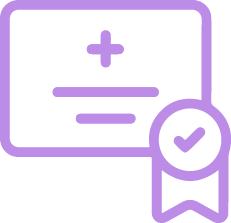
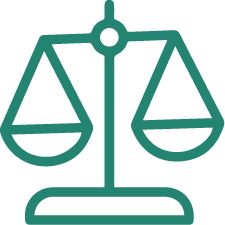
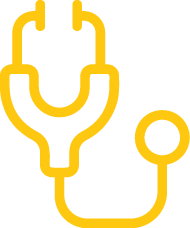
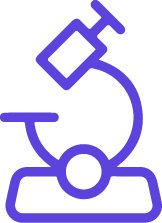
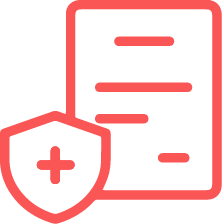
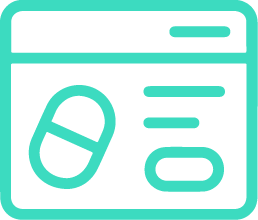















.jpg)







